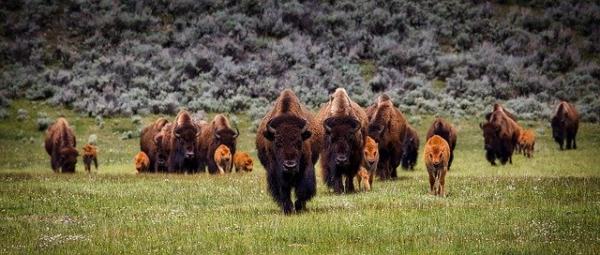Infections spread from one susceptible individual to another, a chain of exposures or contacts – it is the basis for track and trace. COVID-19 was a novel virus, and from the viewpoint of susceptibility, humans were a blank slate; it could move with impunity from host to host. Those trails of contact ended for one of several reasons. The carrier fails to transfer the virus to another, because of inadequate exposure or some innate decrease in susceptibility, or because the virus killed its host. Herd immunity describes a chain of transmission were the number of susceptible individuals is so reduced that transfer is more episodic, hit, or miss. Herd immunity is an equilibrium between virus and host – “herd immunity is not a strategy. It is a natural phenomenon that is the default mechanism for achieving interruption of viral transmission.” [1]
While herd immunity is grounded in our biology, it plays out in social or cultural ways. For example, you rarely hear a discussion about herd immunity for the common cold attributed to rhinovirus. The reason is primarily that the common cold doesn’t kill you. Seasonal flu, on the other hand, can kill you. The CDC estimates that there were 35 million cases in 2019, resulting in 34,200 deaths [2]. Like COVID-19, seasonal flu impacts various populations, call them sub-herds, more than others – especially the elderly.
Here is a tabulation of the incidence, mortality, and vaccination rates for seasonal flu in 2018-19 from the CDC. [2]

In this instance, the “herd” is categorized by age, and as is readily apparent, illness and subsequent mortality vary. More importantly, vaccination rates, the seasonal flu equivalent to masks, social distancing, and hand hygiene vary with the sub herds perceived risk. You see that individual calculation of risk, and choice of prevention, in the data broken out for the 18-49-year-olds, 21% more of the high-risk individuals chose vaccination. That sub-herd instinct to protect itself is also apparent in COVID-19, where Florida’s seniors locked themselves down, at least based upon cell-phone GPS tracking, weeks before the state government acted.
My point is that the “herd,” especially in the media, is thought of as a monolith, when in fact, it is an aggregate of many smaller herds. Herds that can be divvied up by age, or ethnicity, job, or income, which are, in fact, only categories, social-scientific constructs, for infectiousness, susceptibility, and transmission. An across-the-board shutdown was the right call when we had no reliable information because it created the space to begin to see how COVID-19 attacks. A one-size-fits-all approach is no longer the best way forward.
To answer how we return to a social normal, the question is not between your physical and mental health on the one hand and your financial health on the other – while valid, it is a false choice. The answer lies in how we can most safely protect our populations, and that requires herd immunity. Until herd immunity can be enhanced by a vaccine or mitigated by anti-viral therapy, the way forward may well mean identifying the sub-herds with the least to lose and letting them chose their way forward. It also means identifying conditions that would harm the sub-herd. For example, bars where the environment is similar to the acknowledged heightened risk of meatpacking factories, cold with close quarters, need to be off-limits or intelligently restrained.
Among the more pressing concerns is reopening schools. In this setting, there are two distinct sub-herds, students and teachers. The seasonal flu table shows that despite very low mortality, parents are very sensitive to their children’s risk – look at those vaccination rates. Even when mortality drops by two-thirds, vaccination rates drop only by a third. As for the teachers, they too want assurances against risk – after all, the brochure on being a teacher didn’t mention a threat to their lives. So maybe we might consider a blended experience for them as well, with those at most significant risk going virtual while the rest of the staff remains physical. For those interested in the evidence for school reopening you can find a deeper dive here.
[1] COVID-19: Yin and Yang and Herd Immunity. Disaster Medicine and Public Health Preparedness DOI:10.1017/dmp.2020.229




